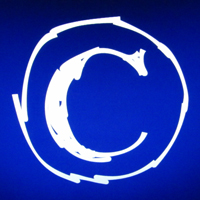- photo contests ▼
- photoshop contests ▼
- Tutorials ▼
- Social ▼Contact options
- Stats ▼Results and stats
- More ▼
- Help ▼Help and rules
- Login
Other Respected Sites:
Photo Editing - Multiple Lessons - Photography Tutorial
Understanding RAW Files: Why Should You Use RAW? - Photography Tutorial

The RAW file format is digital photography's equivalent of a negative in film photography: it contains untouched, "raw" pixel information straight from the digital camera's sensor. The RAW file format has yet to undergo demosaicing, and so it contains just one red, green, or blue value at each pixel location. Digital cameras normally "develop" this RAW file by converting it into a full color JPEG or TIFF image file, and then store the converted file in your memory card. Digital cameras have to make several interpretive decisions when they develop a RAW file, and so the RAW file format offers you more control over how the final JPEG or TIFF image is generated. This section aims to illustrate the technical advantages of RAW files, and makes suggestions about when to use the RAW file format.
submitted: 5 years and 3827 days ago
submitted: 5 years and 3827 days ago
The Power of RAW Files - Photography Tutorial
An Introduction to Photo File Formats - Photography Tutorial

Having a sound knowledge of file formats is essential for digital photography and image manipulation/editing. This article explores the different file formats involved in taking the photographs, their pro's and cons, as well correct use of file formats in a digital workflow. The last section concerns the best file formats for printing, the web, and sharing with friends & family.
submitted: 5 years and 3806 days ago
submitted: 5 years and 3806 days ago
Using The Raw Format - Photography Tutorial
Videos:
How to Shoot the Moon - Photography Video Tutorial

This video demonstrates you how to take an excellent close up photograph of the Earth's Moon without a name - also demonstrates you how to develop the RAW (or NEF) files in Adobe Photoshop Lightroom (We use the original LR in this tutorial but similar results in LR 2) and Adobe Photoshop CS3 (similar results in CS4). Enjoy!
submitted: 5 years and 3803 days ago
submitted: 5 years and 3803 days ago









